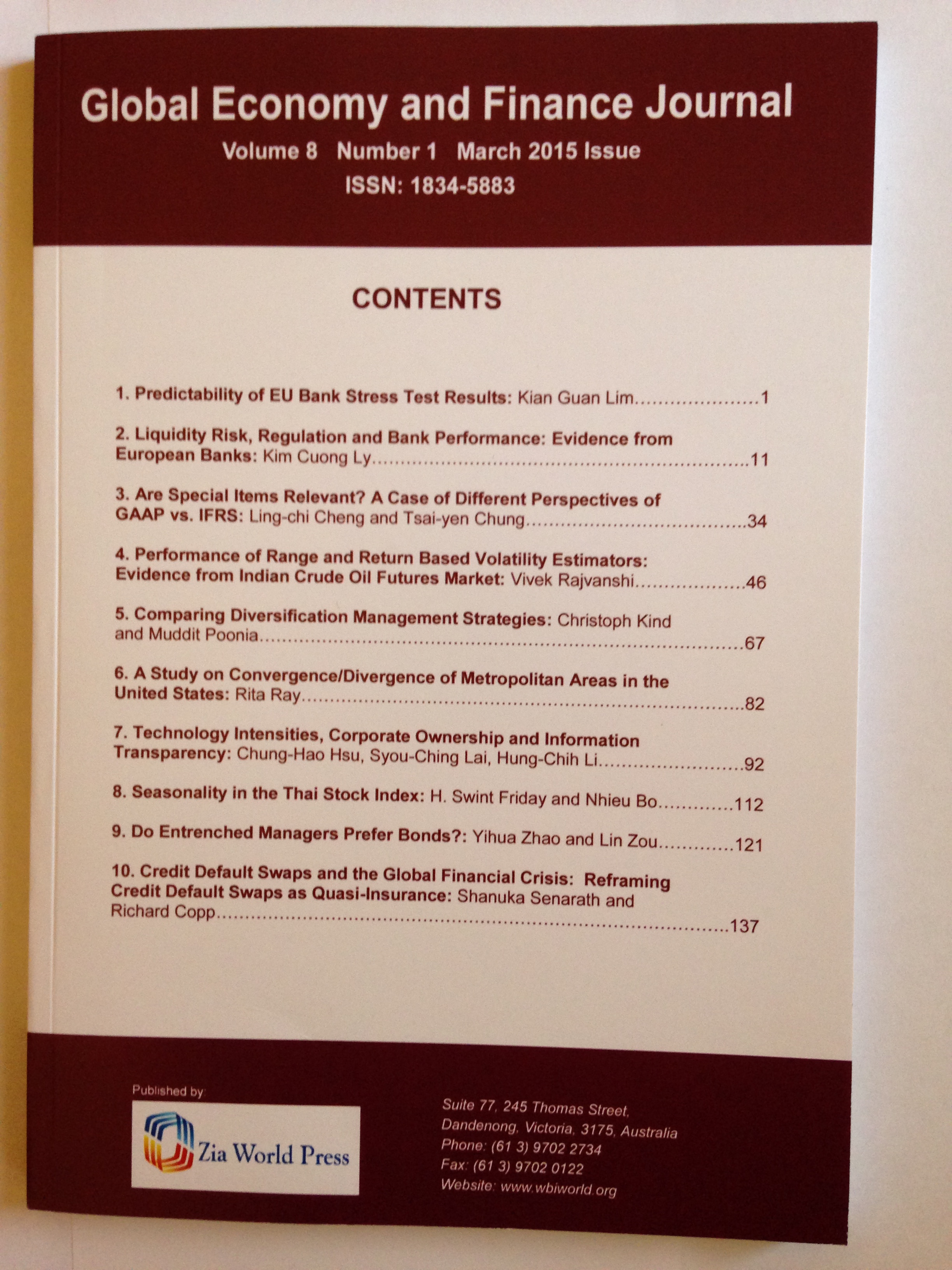Pages
71-92
Adopting a sample of the initial 243 IPOs from the emerging Growth Enterprise Market of China (GEMC) over the 2009 to 2011 period, this study develops a regression model to investigate the relationships between these factors and suggests that the firm’s net profit and its growth rate substantively determine the IPO volume. In addition, this study adopts probit models to test the influence of the four factors on IPO likelihood, and shows that: 1) fundraising amount, as one of the most significant IPO determinants, is positively associated with IPO probability on the new listing market; 2) the net profit, as a fundamental IPO determinant, is positively associated with IPO probability, but also with other indicators, which demonstrates the fact that the GEMC is a profit-preferring listing venue; 3) the net assets determine IPO probability but not IPO volume on the market.

